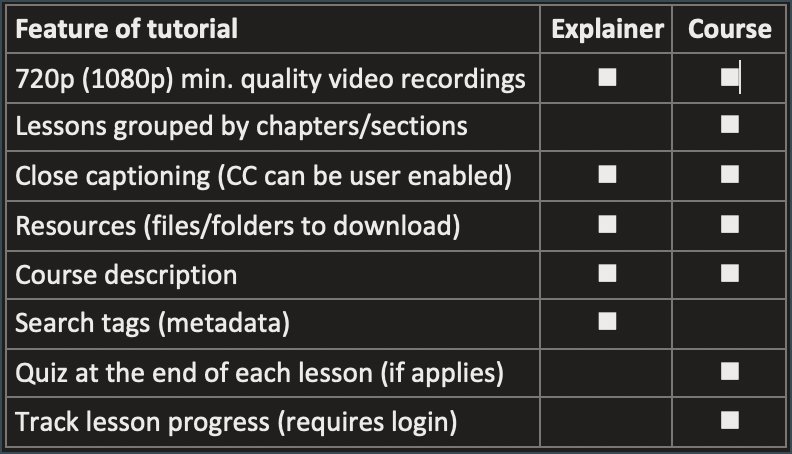
Courseware Development and Design
Blended learning (instructor-directed) and remote learning (self-directed) share a singular mission: to allow the student to learn where and how they choose.
Blended courseware includes video shorts and workbooks that are more in tune with the way that people like to learn. To produce an informative, lively learning experience, Ken applies an organized approach to the design and production of eLearning content. A combination of best practices using ADDIE, parallel ADDIE, and SAM has worked best to deliver a successful outcome that ultimately ensures that the learner gets what they want from courseware.
Learning can be fun and engaging
Now, courseware needs to be available the way students want to learn: online, live classroom, or a combination of the two. Courseware must be a combination of workbook, presentations, downloads, and recorded videos (taken from The Art of Technical Project Management blended learning course currently in development).
The secret is the upfront planning. Identifying common components (templates, sounds, video libraries, …) not only saves time but it gives courseware a consistent look.
Voiceovers and recordings
Brief: Specifies the strategy and goals of the video project. Identify the tools (PowerPoint, Camtasia, AKG, Universal Audio, Neumann, ...) and recording environment (home recording studio, closet, ...) you’ll use.
Script: The voiceover and presentation used in the video project.
Storyboard: For each component, a visualization roadmap for the component is created.
Video component: The actual component is recorded, edited, annotated, and produced.
Preparation means everything …
Starting with a goal and intended audience, storyboard, outline, or sketch the flow of the recording. Tools like OmniOutliner, Sketchbook Pro, and MindNode make it effortless to transform to a script. Once everything is set, practice over and over again until it feels right. To record, forget about paper scripts. Script pacing apps that highlight your voiceovers in real-time are available for iPadOS (or iOS) device with SmartPrompt Pro. And to position the script pacing tablet near the mic, Twelve South’s HoverBar Duo is amazing.
These are all time-tested products we depend on.
These are the Must-Haves
Let’s not forget about what should be included in two types of eLearning material: explainer videos and courses.
Thinkific LMS
This comes up all of the time. After careful evaluation of learning management system (LMS) sites, we have settled on Thinkific* as one of the best for posting courses and tutorials. This LMS handles everything you would expect a virtual classroom would need:
High-quality streamable videos
Preview “teaser” lessons (can be on Youtube)
Detailed course/lesson descriptions
Resources to download
Closed captions (optional)
Quizzes
Student management and course purchase options (based on logins)
* You may be considering another LMS that supports your overall eLearning goals
Screencast
When all you need is a simple place to host eLearning videos that don’t require a login or some of the more comprehensive features* than a LMS does. And if you want to post learning videos for others to review, for instructors only, or to complete an entire course before committing it to an LMS, there is nothing better (or more cost-effective) than TechSmith Screencast.
* Although Screencast can support closed captions, quizzes, and other key features, it does not support downloading resources. (Instead, insert a link to the files on Dropbox.)
An example
I used a combination of Adobe Premiere Pro, Adobe Audition, and Camtasia to create high-quality videos and common video components (lower thirds, watermarks, INtros, and OUTros, closed captions, and quizzes). An example is my Upwork profile* video short hosted on Youtube.
* This video has an animated portrait of me yapping—a little creepy—but it sure was fun to create!
For more information on courseware development services:







